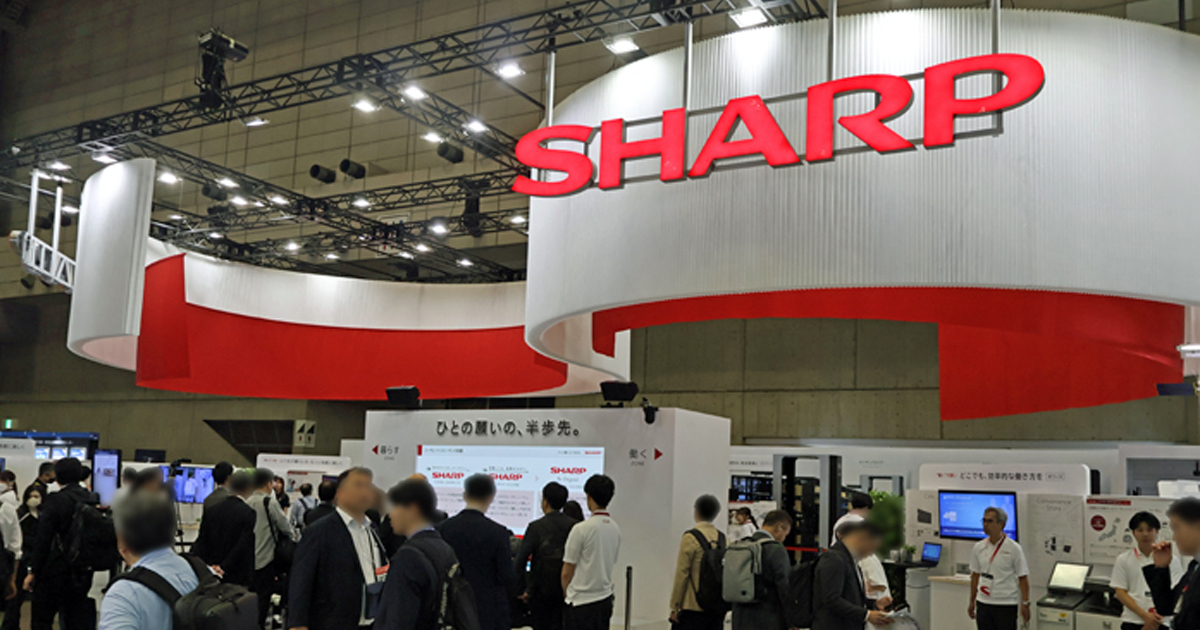In recent years, the term “electronic paper” has become increasingly familiar. It offers unique benefits with both the thinness and readability of paper and the digital convenience of switching displays of multiple contents on a single device. Ideal for displaying still images, it maintains the display at 0W power consumption and consumes power only when switching images — making it attractive not only for personal e-book devices but also for public and business display applications.
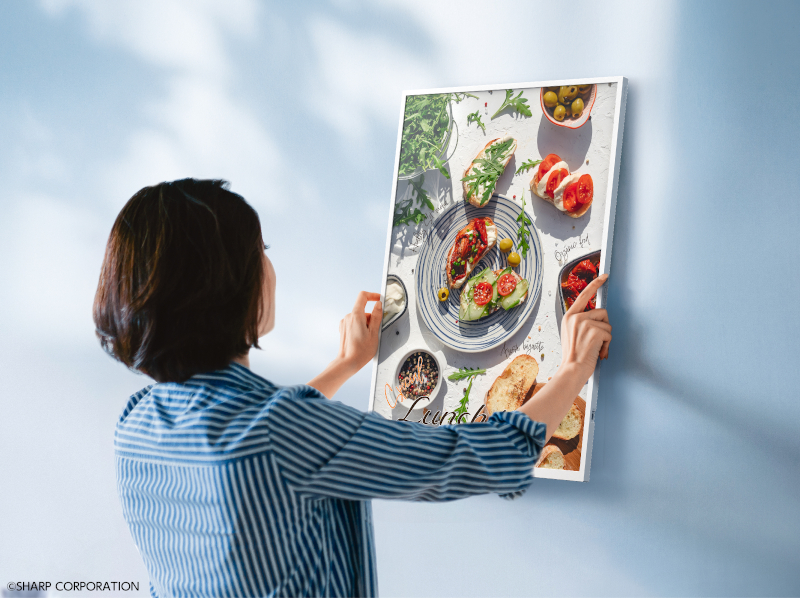
Sharp has applied its electronic paper technology to signage displays used for signs and notices, selling them under the name ePaper. The prototype of 28.6″ ePaper Display was first unveiled at SHARP Tech-Day held at Tokyo Big Sight in November 2023, drawing significant attention. It was released in June 2025 as model number <EP-CA22>.
28.6″ ePaper Display is equipped with SDTC ePaper module that uses E Ink’s Spectra™ 6 technology. It also combines Sharp’s proprietary color management technology from LCD displays and image processing technology from multifunction printers (MFPs / copiers). This unique image processing technology enables more vivid and beautiful color expression, significantly enhancing display quality.
We interviewed engineers Nishizaka, Murakami, Takato, and Hayasaki from the development team to learn more about Sharp’s proprietary image processing technology.
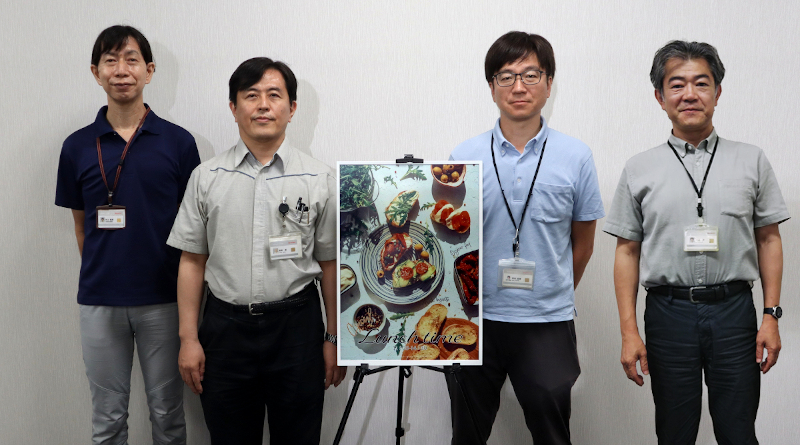
(From left) Murakami, Takato, Nishizaka, Hayasaki from the development team
■ In a word, what is the principle behind ePaper’s color display?
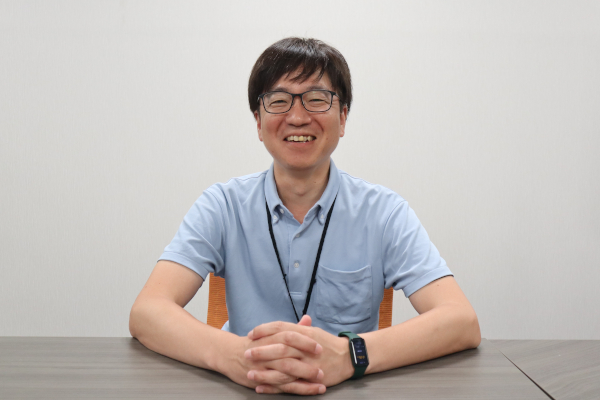
(Nishizaka) ePaper has a structure where microcups — each acting as a pixel — are sandwiched between transparent top and bottom electrodes. Inside each microcup are charged color inks and a transparent liquid. When voltage is applied between the electrodes, the color inks move within the microcups to express colors.
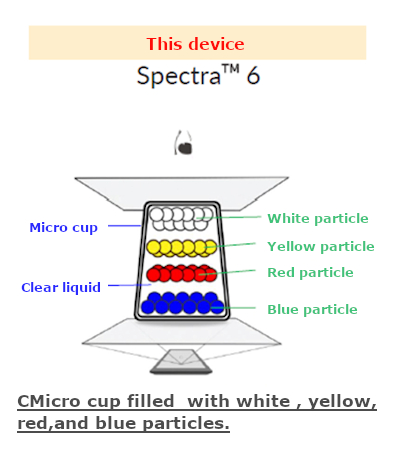
The top side of the diagram is the display surface.
(Provided by E Ink)
Unlike LCDs and OLEDs, which can express tens of thousands of color gradations per pixel with high resolution and wide color gamut, ePaper Displays are limited to six colors per pixel (white/black/red/green/blue/yellow in Spectra6). Images are expressed by creatively combining these colors. From a distance, the image looks natural, but up close, you can see the six-color dots. It’s an interesting visual experience.
The key feature is the use of special color inks that maintain the displayed state at 0W power consumption until the image is changed.
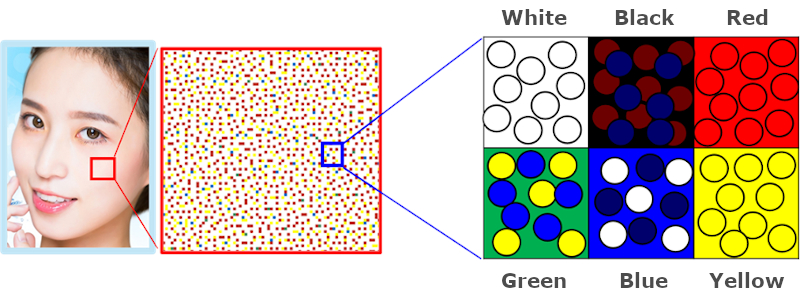
(Right) Voltage changes the arrangement of four inks in microcups to express six colors (image)
■What are the differences between the newly developed 28.6” ePaper and the previous models?
(Nishizaka) Our previous ePaper models, the 25.3” and 13.3” versions <EP-C251/C131>, adopted the technology of E Ink’s Gallery (TM) Plus. In contrast, new 28.6″ ePaper Display <EP-CA22> uses E Ink’s latest Spectra 6 technology, which significantly enhances the vibrancy of red, blue, and yellow. Additionally, Sharp’s proprietary image processing technology delivers natural and easy-to-read visuals. This technology incorporates color management expertise from our LCD displays as well as image processing know-how from our MFP (multifunction printer) products.
■How is the color management technology from LCDs utilized?
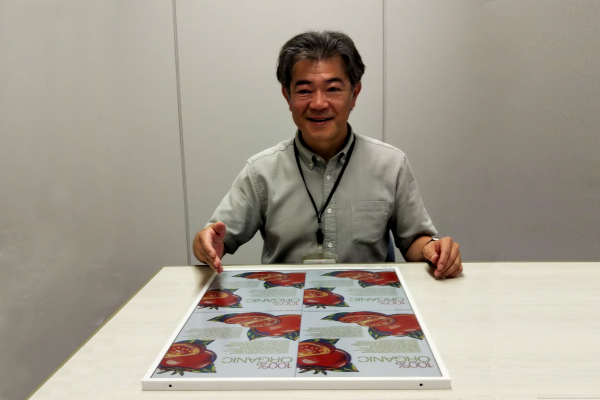
(Hayasaki) When image data is printed with an MFP or displayed on an LCD, the color information must be adjusted to suit the characteristics of each device.
For example, to accurately display an image created in sRGB (a global standard color space) on an LCD screen, the display signal needs to be converted based on the backlight brightness and panel characteristics. This process involves creating a color conversion table — a method known as color management.
Since ePaper uses a different set of base colors and exhibits distinct color characteristics compared to traditional displays or MFPs, we developed a new approach to fine-tune color transitions and enhance color vividness for the system based on conventional color management methods. Final adjustments were made through visual evaluations.
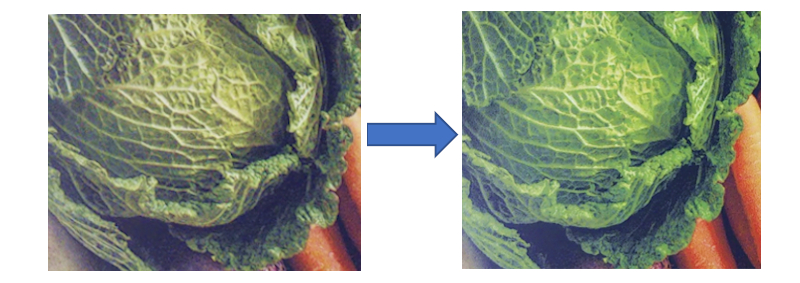
For instance, in an image of green vegetables, the unadjusted green appears dull (left image). To enhance the vibrancy without introducing a yellowish hue, we made precise adjustments to produce a more natural green (right image).
■How is MFPs image processing technology used?
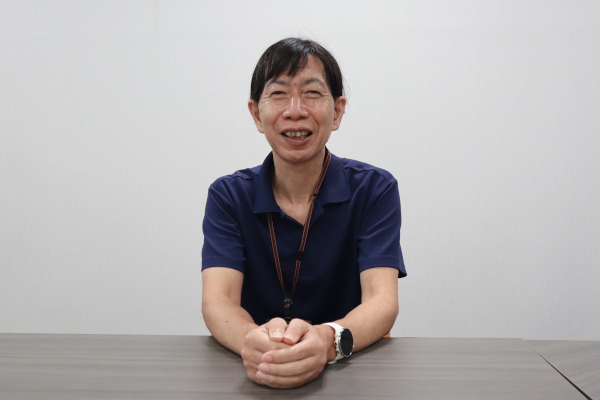
(Murakami) We applied Sharp’s image reproduction technologies from our MFPs — specifically pseudo-tone reproduction techniques such as error diffusion and ordered dithering — to enable rich color representation.
MFPs use only four toner colors: black, cyan, magenta, and yellow. While each color supports several gradation levels, a single pixel cannot express a full range of color. Pseudo-tone reproduction uses multiple surrounding pixels to reproduce intermediate tones, achieving more natural color expression.
Similarly, the Spectra 6 panel is limited to six display colors per pixel. By applying these pseudo-tone reproduction techniques, we make it appear as if the display has more gradation and a broader color range.
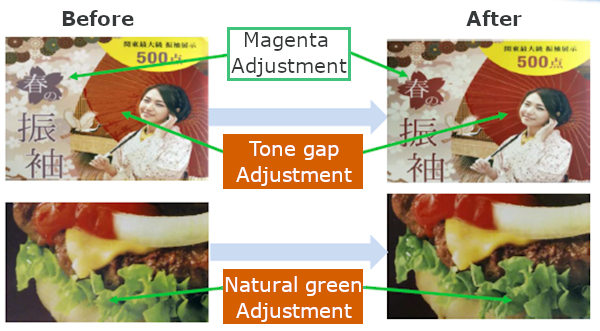
(right) adjusted image using pseudo-tone reproduction
Comparing two images, you’ll notice how magenta adjustment transforms the grayish tones into vibrant reds. In the case of a traditional Japanese umbrella, the unadjusted pale red area looks blotchy, but it transitions smoothly and naturally with tone gap adjustment.
(Takato) We’ve also applied MFP-based technology to allow users to choose the optimal display mode — [Color Priority / Text Priority] — depending on the type of content (BMP, JPEG, PNG, PDF).
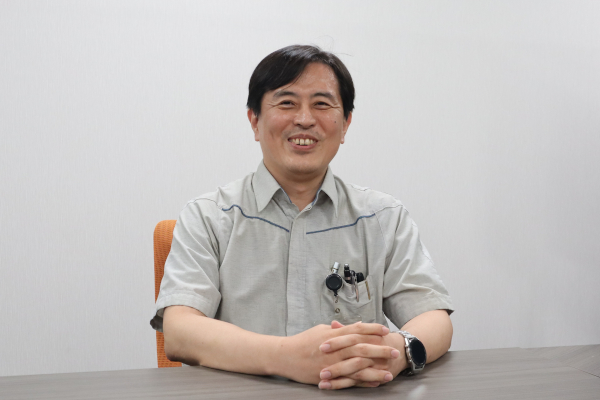
By switching between photo-optimized and text-optimized modes, users can improve overall visibility. For example, when displaying a text-only poster, certain colors or tones might make the text appear faint. In such cases, selecting “Text Priority” enhances outline sharpness and color uniformity, making text easier to read.
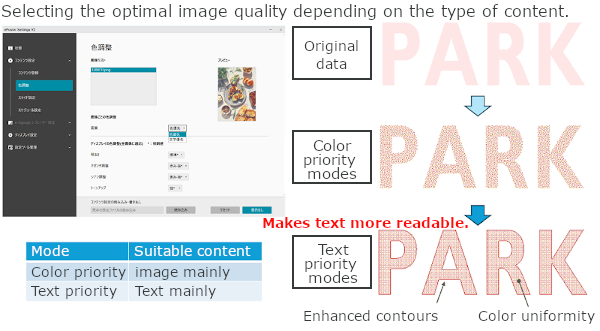
We’ve also added several color adjustment functions such as gamma correction for brightness, Magenta Adjustment (explained earlier by Murakami), Cyan Adjustment, and Tone Up.
In previous models, if users wanted to adjust brightness, they had to modify the content itself. With the new model, fine adjustments can now be made directly via device settings.
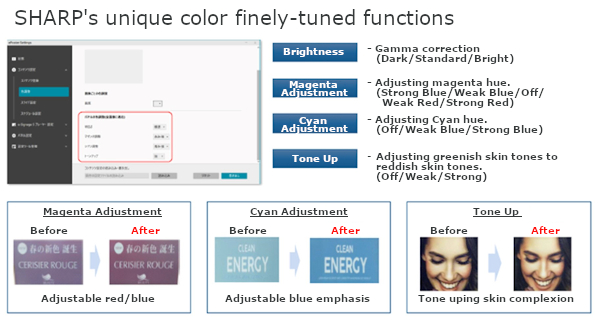
■What challenges did you overcome during development?
(Nishizaka) My background is in brightness and color adjustment for LCD displays, and I had accumulated considerable experience in that area. However, working to improve image quality on ePaper was a completely different challenge. I soon realized that the image processing mechanisms for ePaper Displays are entirely different from LCDs and quickly hit a wall. That’s when I thought of electronic paper as being closer to “paper” — and “paper” made me think of MFPs. So I consulted with that team, which allowed development to move forward.
(Murakami) After being approached, we started by building mutual understanding to integrate MFP color expression technologies into 28.6″ ePaper. We discussed the possibilities and started testing, which revealed several issues — one major challenge being the graininess (grainy texture).
Since 28.6″ ePaper uses pseudo-tone reproduction to enhance color richness, some degree of graininess is inevitable when viewed up close. However, certain colors within smooth gradients showed excessive graininess, creating noticeable gaps with surrounding areas.
The error diffusion process determines which of the six displayable colors is closest to each RGB value using vector error diffusion. We refined the criteria in this process to slightly increase graininess in areas where it was minimal while reducing it where it was excessive — without making low-grain areas look worse. Finding the right balance was extremely difficult.

(Right) After adjustment
(Nishizaka)
Image tuning on ePaper may seem simple at first glance, but color control proved to be highly complex. Fixing one issue often created new ones, leading us into cycles of trial and error.
Still, by merging our MFP and display technologies, we developed a unique image processing method that we’re truly proud of — delivering more beautiful visuals than ever.
Thank you very much.
New 28.6″ ePaper Display <EP-CA22> showcases improved display performance thanks to Sharp’s proprietary pseudo-tone reproduction technology. Beyond image quality, ePaper also reduces the need for manual poster replacement and consumes less power than traditional displays. We encourage you to consider adopting it.
(Public Relations C)
Product Information
News release
Sharp Launches A2 Size ePoster Color Electronic Paper Display
SHARP Blog
See Where Color Electronic Paper Display ePoster EP-C251 That May Replace Paper Is Used and How
Related articles
